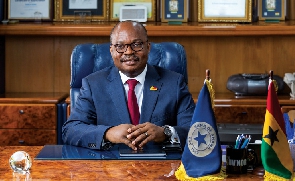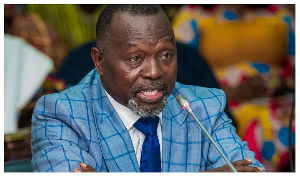The Governor of the Bank of Ghana, Dr Ernest Addison, has said the banking sector of the Ghanaian economy remains financially strong.
He said the banking sector remains liquid, profitable and well-capitalized with strong buffers to withstand adverse shocks and support the country’s recovery efforts from the pandemic.
Speaking at the Monetary Poly Committee press conference in Accra, Dr Addison said asset quality has also improved, adding that the Financial Soundness Indicators and the Banking Sector Stability Index remain in high positive territories.
“The industry’s CAR of 20.0 percent as at end October 2020 remains well above the regulatory minimum threshold. The latest banking sector data as at October 2020 indicate that total assets grew by 23.7 percent year-on-year to GH¢150.0 billion while deposits also recorded an annual growth of 27.0 percent to GH¢100.2 billion. Total advances also went up by 13.7 percent year-on-year to GH¢47.4 billion over the period.”
“On the external sector, prices of key export commodities have traded mixed in the year to October 2020. Driven by low demand, crude oil prices sharply declined by 36.5 percent from the beginning of year to October 2020. Crude oil prices averaged US$41.1 per barrel in October, compared with US$65.2 per barrel average price in December 2019.
“On the contrary, gold prices increased by 28.3 percent to average US$1,900 per fine ounce at the end of October. Gold prices have been largely supported by accommodative monetary policy, increased uncertainty, and the global economic slowdown due to COVID-19. Cocoa prices averaged US$2,423.5 per tonne in October 2020, marginally down by 3.8 percent on a year-to-date basis due to a pandemic-linked drop in global demand.”
“These commodity price developments impacted variously on the trade balance. In the first nine months of the year, total exports contracted by 7.9 percent year-on-year to US$10,790 million, driven mainly by the significant decline of US$1,220 million in crude oil export receipts on the back of low prices.”
“Gold and cocoa export earnings on the other hand, went up by 8.0 percent and 11.0 percent respectively, due to favourable prices and production volumes. Total imports slowed by US$939 million to US$9,244 million over the period, underpinned by significant declines in both oil and non-oil imports. As a consequence, the trade balance recorded a surplus of US$1,545.6 million (2.3 percent of GDP) in the first nine months of 2020, compared with US$1,530 million (2.3 percent of GDP) in the same period of 2019.”
“The current account for January to September 2020 improved marginally, recording a deficit of US$1,267 million (1.9 percent of GDP) compared with a deficit of US$1,497 million (2.2 percent of GDP) for the same time in 2019.”
“The current account outturn was supported by stable inflows in current transfers, especially remittances, and lower net investment income outflows, particularly profits and dividends. The improvement in the current account was offset by lower inflows in the capital and financial account, which recorded a balance of US$366 million for the first nine months of 2020, compared with US$2,273 million in the same period in 2019.”
“This was attributed to the lower-than-projected inflows from FDIs and portfolio investments. This resulted in an overall balance of payments deficit of US$676 million (1.0 percent of GDP) for the first nine months of 2020, compared with a surplus of US$879 million (1.3 percent of GDP) for the same period in 2019.”
Business News of Wednesday, 25 November 2020
Source: 3news.com

















